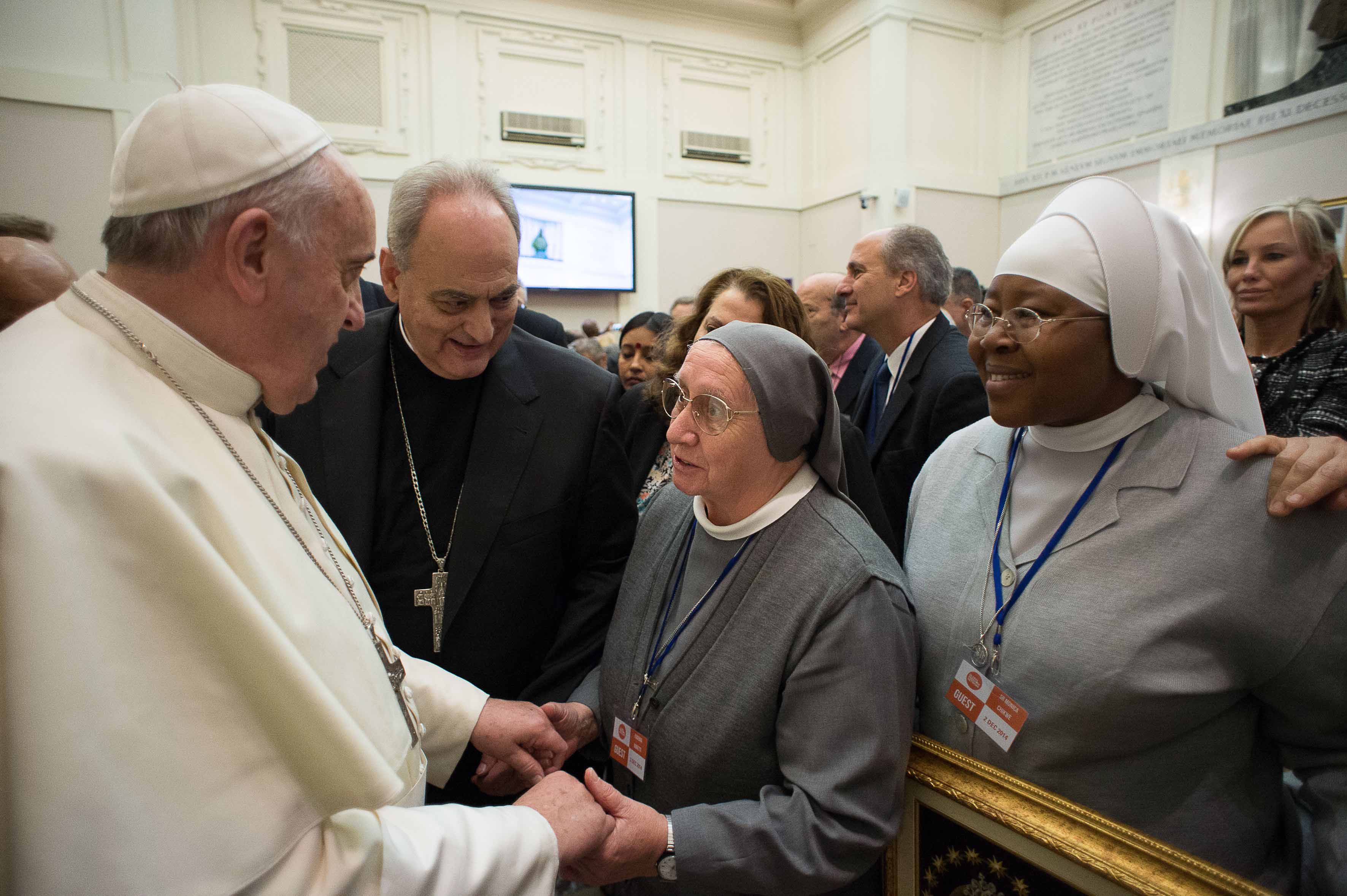By Christopher White, The Tablet’s National Correspondent

ROME – For Sister Eugenia Bonetti, recently tapped by Pope Francis to write the reflections for Friday’s Way of the Cross, the aim will be to show the world the ways in which Christ still suffers today.
The 80-year-old nun, who has dedicated much of her life’s work to rescuing women from human trafficking and sex slavery, was convinced to say yes to the pope’s request after Cardinal Gianfranco Ravasi, the Vatican’s cultural czar, said it was an opportunity she couldn’t refuse.
“We need to have a different Way of the Cross that could remind people how Christ is still suffering today, especially through the work that you do with women, migrants, the people that are exploited, and the children,” he pleaded with her.
“I thought then that, of course, I could no longer say ‘no,’” she told The Table tlast week during a Vatican organized conference on human trafficking in Rome.
As a Consolata Missionary who served for twenty-four years in Kenya, it wasn’t until she returned to Italy in 1993 that Sister Eugenia’s eyes were opened to the widespread nature of sex trafficking.
While speaking with Nigerian women at a local Caritas center, she came to realize “through their stories and listening to them that I was not dealing with prostitutes. I was dealing with people who have been trafficked. Behind that trafficking, many other people were involved.”
Further, she said that she quickly came to realize just how many people were complicit in the trafficking enterprise.
“There is the poverty, the way in which they were brought to Italy, the madams from their own country, the traffickers – the people in Italy started using them,” she said.
“The first lady who asked for help, she became my teacher. My catechist, helping me to realize what these young girls were experiencing on the streets,” she recalled.
She then decided that she must work to confront this crime head on.
“I could no longer think about Africa, my mission is here in my own country,” she reflected.
Over the past 25 years, she – along with her fellow missionary sisters – have provided shelter to over 6,000 women rescued from trafficking. Together, they worked not merely to free them from captivity, but to teach them Italian and other skills-based courses, and to provide the necessary legal documentation that would allow them to stay in Italy.
One of those women would go on to be eventually baptized into the Catholic Church by Pope John Paul II.
“I remember thinking that she had passed from the dusts of the street into the majesty of Saint Peter’s,” Sister Eugenia recalled. “It was so moving.”
In recent decades, religious sisters have been on the front lines in the fight against sex trafficking, often pioneering new ground for the rest of the international community to follow suit.
Yet for all of her efforts, Sister Eugenia shuns personal attention.
“No one can claim this is my project,” when it comes to this issue, she said. “This is our project.”
Even so, as thousands of pilgrims gather at Rome’s Colosseum on Friday for the Via Crucis, they will bear Sister Eugenia’s words as they work their way through the Stations of the Cross.
She told The Tablet that her intent was to put into writing what she has been “doing, listening, and suffering” for more than twenty years.
While she says she wasn’t given much notice to draft her reflections – adding that she wished she could have had a chance to pen them after participating in last week’s Vatican conference on the issue – she said she hopes they reflect “the way of the cross as it was lived by Christ, Our Lady- his mother, and the people that followed him to the cross even today.”
“We need that now. Now,” she insisted.
“These young people are really climbing Calvary and we want to break this,” she says of the horrors of trafficking. “Jesus, he fell down three times. How many girls are feeling this today?”
“They are tired, destroyed, and naked as Jesus was. All the ways of the cross that Jesus lived are lived today in what we call the new slave trade,” she continued. “But as there was a Resurrection for Jesus, just as with these girls, there is a Resurrection, too.”
